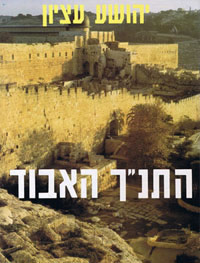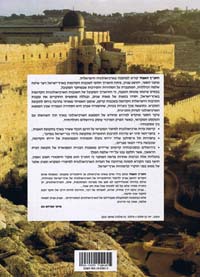

A Book by Yehoshua Etzion
Schocken Publishing House, Tel Aviv, 1992,
280 pages
Synopsis:
This controversial book calls for a revolution in our view of the archaeology of ancient Israel. Etzion claims that the almost total lack of correspondence between the archaeological data and the Biblical tradition can be explained by an error in the dating of the pre-Hellenistic strata in the Land of Israel, which has led archaeologists to look for the remnants of the Israelite culture in earth layers which in fact post-date the Biblical period by several hundreds of years.
The author has developed a comprehensive alternative system of dating for the early strata in the Land of Israel that resolves many of the discrepancies and contradictions in the existing system. Using his alternative system of dating, he is able to show that wherever the excavators have thrust their spade in the Land of Israel and dug deeper, they have unintentionally revealed significant remnants of the Israelite past which correspond to the Biblical descriptions.
The book, foreworded by Professor Avraham Negev, is accompanied by nearly pictures and maps, and contains a detailed index and an extensive bibliography. The text is divided into five sections. The first section reviews the history of the archaeology of the Land of Israel, explaining the logic and the methodology behind the alternative dating. The second section covers the period from the days of the Patriarchs until the kingdom of Solomon and describes the archaeological evidence of the Chalcolithic, Early Bronze, and Middle Bronze Age strata in the Land of Israel. The third and central section of the book takes up problems concerning Biblical Jerusalem. It shows that the City of David was located within the boundaries of present-day Old Jerusalem and not, as commonly accepted, on Ophel Hill. The forth section covers the First Temple period and the archaeological evidence of the Late Bronze Age stratum. The last section of the book describes the archaeological evidence of the Iron Age stratum, covering the period of the Return to Zion, which, according to the accepted view, is almost non-existent in the ancient strata in the Land of Israel.
In accordance with his thesis, among other things, the author shows the following:
- The Sinai Peninsula is strewn with the material remains of the Israelites’ wandering in the desert.
- The fallen Walls of Jericho were discovered at the ancient site of Jericho (Tel es-Sultan)
- In the Old City of Jerusalem, monumental relics from the time of the First Temple still exist, some of which were built by David and Solomon.
- The El-Amarna letters are actually from the days of the last kings of Judea.
- Most of the Egyptian material found in the Land of Israel in the Late Bronze Age stratum pertains in fact to the Philistine culture
- In Tel Lachish shocking evidence of wartime atrocities of the Babylonian soldiers is apparent.
Since its publication in February 1992, the book has touched off a storm of debate among Israeli researchers and has been both hailed and rejected.
Professor Avraham Negev - former head of the Institute of Archaeology at the Hebrew University of Jerusalem - wrote, in his foreword to the book, that "unlike the work of the traditional archaeologists... Etzion provides a complete picture without anomalies... his method should be adopted by any archaeologist researching a new country".
At the same time, Professor Ephraim Stern, editor of Qadmoniot the Quarterly of the Israel Exploration Society wrote that The Lost Bible is an example of the tendency of amateurs to interfere in scientific matters reaching new heights. Professor Yaakov Shavit, in a newspaper article, labeled Etzion as a "secular fundamentalist", and Professor David Ussishkin former head of Tel Aviv University’s Institute of Archaeology warned the public in a radio interview against reading the book.
Conversely, the noted Biblical scholar Professor Yehuda Elizur, of Bar-Ilan University, said in a recorded symposium on the book held at the Weizmann Institute that he found in The Lost Bible many original and innovative ideas that seem to him true, particularly the identity of the builder of the Eastern Wall of the Temple Mount. Even if only this single idea turns out to be right, he said, publication of the book will have been worthwhile. Professor Avraham Ronen - head of Haifa University’s Institute of Archaeology - wrote to the publisher that the book contains many amazing and stimulating new ideas, and the former president of Israel Mr. Haim Herzog stated that reading The Lost Bible turns one’s interest in archaeology into an exceptionally fascinating adventure.